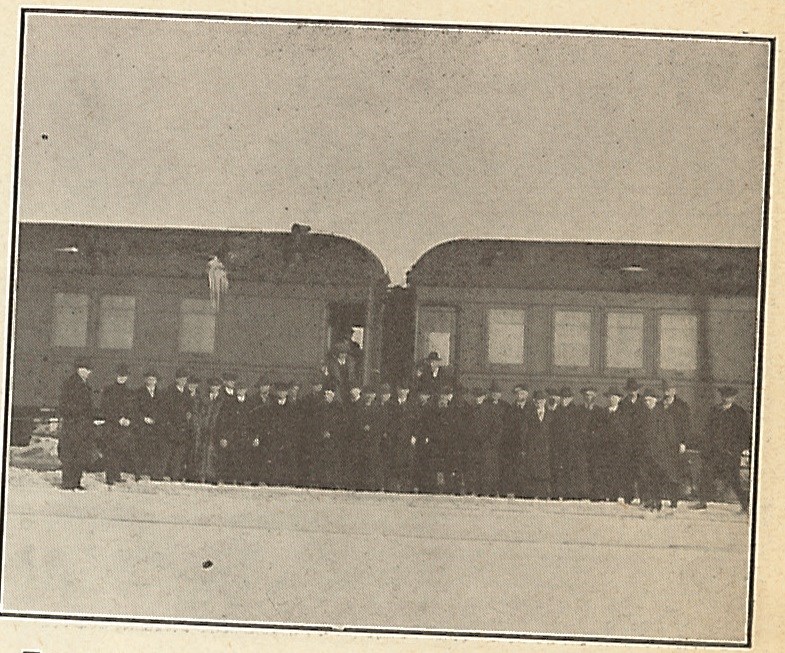From the archives of the Sault Ste. Marie Public Library:
Canada grew into a nation through the building of railroads, but those vast stretches of iron rail have also borne witness to many deadly crashes throughout history.
One of the worst accidents to occur in the history of the Canadian Pacific Railway, which left only 30 alive, occurred on the Soo Express 108 years ago.
In late January 1910, the Soo Express, also known as the No. 7 train, was running right on time carrying 100 passengers. The train had only made it five miles past Nairn on its routine route from Sudbury when disaster occurred.
The train, while rounding a corner to approach the bridge crossing the Spanish River, began lurching. For reasons that were never determined, the second-class car separated from the colonist car and rammed itself into the iron bridge. The force of the impact broke the coach in two, with one half plunging into the frozen river below, while the other half immediately burst into flames. This was the result of having oil stoves to heat the coach during this time.
When the second-class coach struck the bridge, it blocked the following cars, causing a chain reaction described at the time as "one of the most terrible massacres in the tragedy of road travel on the American continent."
The first-class coach went into the river next, becoming fully submerged under the foot-thick ice. According to a Sault Star article at the time, out of the 50 passengers trapped in the car, only one survived. An unconscious man found clinging to a transom three hours after the crash, was "revived" with liquor by rescue workers.
Soon after the first-class car, the dining car was the next to plunge itself into the icy water below. This time, the kitchen end of the car was spared the dive. There were about fourteen people in the dining car, all were injured, some so bad they never managed to escape.
The Pullman car, also known as the sleeping car, went over the snowbank, causing it to turn on its side. Although almost every occupant was injured, none were fatal.
Still five miles from Nairn, a brakeman and passenger took it upon themselves to go travel back in freezing weather to contact help.
While the suspended section of the second-class car burned, the remaining 20 or so burning bodies of the passengers dropped onto the river's ice one by one, into a pile.
The passengers trapped in the first-class coach were doomed as soon as they hit the water. A Sudbury Journal stated that the way the car cut clean into the ice made it so that if anyone were to escape through a broken window or otherwise, they would have still been trapped under the ice.
The death toll of the disastrous train wreck – according to an article at the time – accounted for 70 people.
The Spanish River Pulp and Paper Company dam, located in Espanola a few miles down the river, raised the water at the bridge four feet, so that there was less of a current. By doing this shortly after the crash occurred, it made sure none of the bodies floated down the river.
For a week after the crash, many still believed there was another eighth coach in the river completely undiscovered, hidden away from sight. This was however resolved, courtesy of an entry in the order book as the train passed Sudbury. The entry stated: "Engineer Geroge Trelford, North Bay, engine no. 1116, train no. of cars 7, Signed, Reynolds, conductor,"
The seven cars included mail, baggage, colonist, second-class, first-class, dinner and Pullman.
Although no definite cause has been determined, some have suggested the crash was caused by the rails' supposed tendency to spread and break on the particular stretch of track that the crash occurred. The other suggestion was that the brakes might have been applied too hastily on the two-mile stretch approaching the bridge.
Each week, the Sault Ste. Marie Public Library and its Archives provides SooToday readers with a glimpse of the city’s past.
Find out more of what the Public Library has to offer at www.ssmpl.ca and look for more Remember This? columns here
